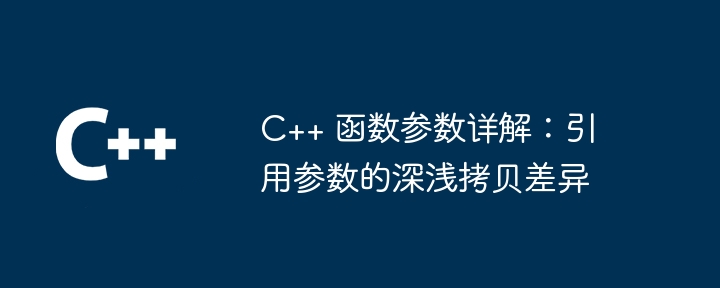
In C, parameters passed to functions can be divided into value passing and reference passing. There are two types of reference parameters: shallow copy references and deep copy references. A shallow copy reference passes the reference itself to the function, allowing the function to modify the original object. A deep copy reference passes a copy of the object referenced by the reference parameter. Modifications to the copy by the function will not affect the original object. Use shallow copy references when functions need to modify objects, and also use shallow copy references when avoiding unnecessary copies. Deep copy references are used when the function should not modify the object or when the object is immutable.

In C, there are two main types of parameters passed to functions: value transfer and Passed by reference. Reference parameters work by passing a reference to an object or variable, rather than a copy of it, in contrast to passing by value.
There are two reference parameter types:
The following figure shows the difference between the two reference parameter types:
// 浅拷贝引用
void shallow_copy(int& a) {
a++;
}
// 深拷贝引用
void deep_copy(const int& a) {
int b = a;
b++;
}
int main() {
int x = 5;
// 浅拷贝引用示例
shallow_copy(x); // 改变 x 的值
cout << "x after shallow copy: " << x << endl; // 输出 6
// 深拷贝引用示例
deep_copy(x); // 不改变 x 的值
cout << "x after deep copy: " << x << endl; // 输出 5
return 0;
}Shallow copy reference in Useful in the following situations:
Deep copy references are useful in the following situations:
The above is the detailed content of Detailed explanation of C++ function parameters: differences between dark and shallow copies of reference parameters. For more information, please follow other related articles on the PHP Chinese website!
 What are the differences between c++ and c language
What are the differences between c++ and c language
 Recommended learning order for c++ and python
Recommended learning order for c++ and python
 Cost-effectiveness analysis of learning python and c++
Cost-effectiveness analysis of learning python and c++
 Is c language the same as c++?
Is c language the same as c++?
 Which is better to learn first, c language or c++?
Which is better to learn first, c language or c++?
 The difference and connection between c language and c++
The difference and connection between c language and c++
 C++ software Chinese change tutorial
C++ software Chinese change tutorial
 Cost-effectiveness analysis of learning python, java and c++
Cost-effectiveness analysis of learning python, java and c++




